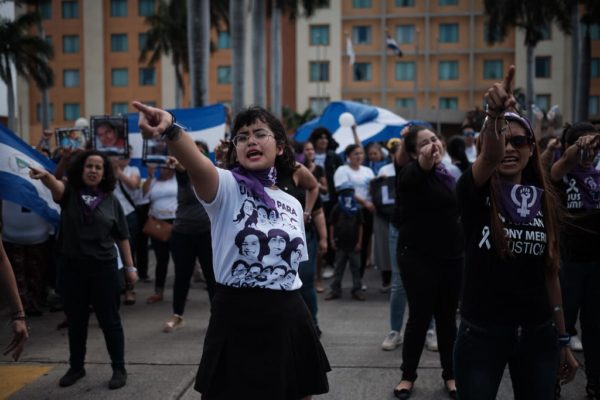journalists, artists, academics and activists among the victims

There are currently 19 female political prisoners in Nicaragua, principally journalists, online activists, artists, and academics. All are being punished for refusing to bow down to the dictatorship of Daniel Ortega and Rosario Murillo.
HAVANA TIMES – Female academics, artists, online activists, journalists, cultural promoters, and critics in general have been the target of “a structured policy of repression” on the part of the Ortega government. That’s the conclusion of a report authored by researchers Arlen Alejandra Padilla and Elvira Cuadra from the Center for Central American Cross-disciplinary Studies (Cetcam).
The study, published in Spanish, is titled: Voz, Saberes, Cultura y Memoria. Resistencias y Resiliencias Colectivas de las Mujeres Nicaragüenses (“Voice, Knowledge, Culture and Memory: Collective Resistance and Resilience of Nicaraguan Women”). It accuses the regime of “retaliating” against these women “for challenging the socially imposed gender roles and stereotypes, in general as well as in specific areas.”
They’ve gone after these women in response to their participation in processes aimed at the democratic transformation of the country, especially after the social explosion of 2018. That’s one of the conclusions of the aforementioned think tank, based in Costa Rica and comprised of Central American researchers from different disciplines.
In an interview broadcast on the online television news show Esta Semana and published on the Confidencial website, Elvira Cuadra, Cetcam director, details the ways in which the government of Ortega and his wife lash out against Nicaraguan women, and the tactics the women have implemented for mutual protection against those attacks, both in person and digitally.
This investigation is based on interviews and focus groups involving some 30 women in Nicaragua and in exile. How much weight does the world of these women carry, when compared with women as a whole?
These are groups of women who face very specific forms of violence related to the exercise of their careers, intertwined with other characteristics. They tend to be young women, or elders, or women from Nicaragua’s Caribbean Coast region. In 2022, we carried out a study to give us the general panorama of [government] violence against women. We discovered that certain groups experienced particular types of violent actions. These groups – journalists, online activists, etc. – don’t represent significant numbers in relation to the rest of the population, but carry weight through the type of activity they engage in.
Is political violence also gender violence? In what sense is the violence that rural woman, political activists, or university students suffer unique or distinct?
It’s gender violence, but it’s also political violence. It’s gender violence because in Nicaraguan society there’s a system that reproduces generalized forms of violence towards all women. through images, representations, traditional gender roles and a series of beha


